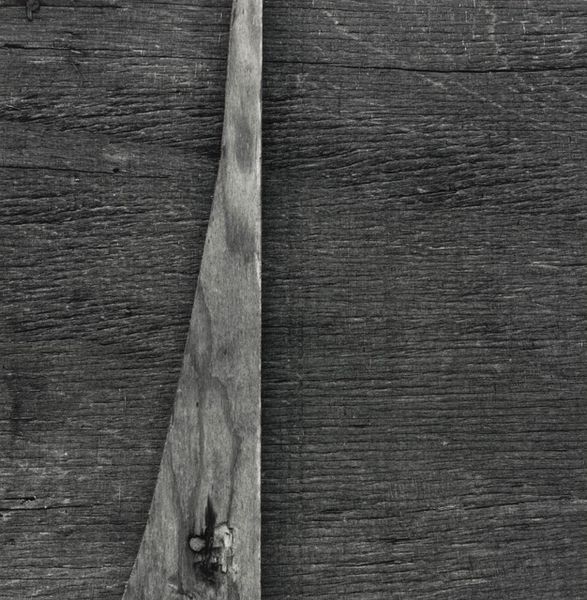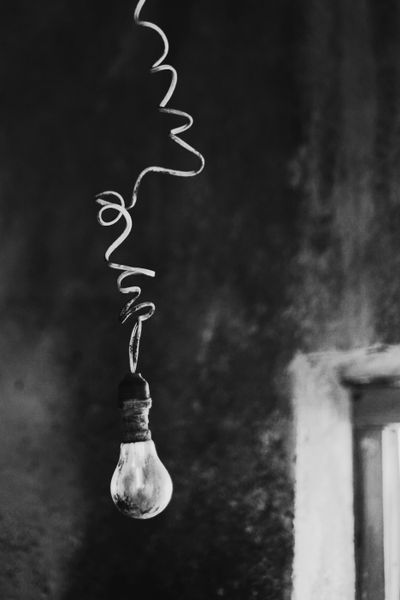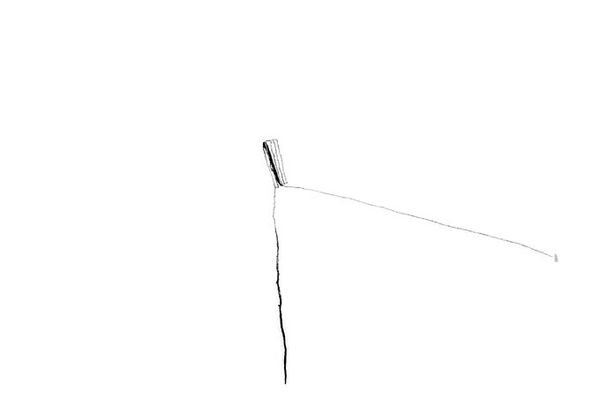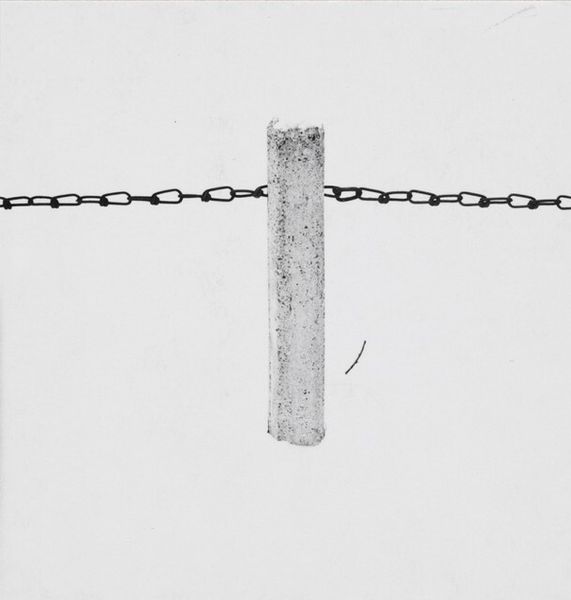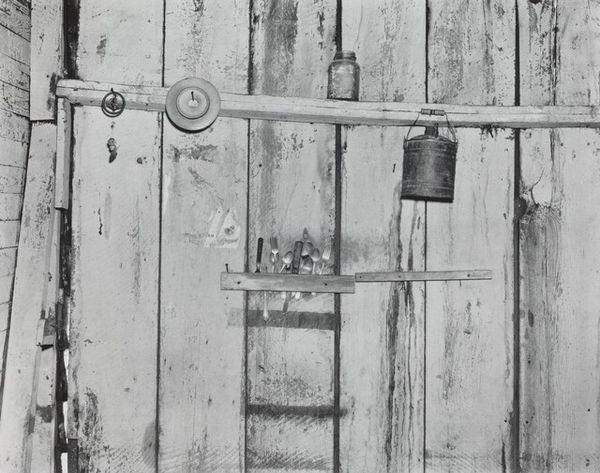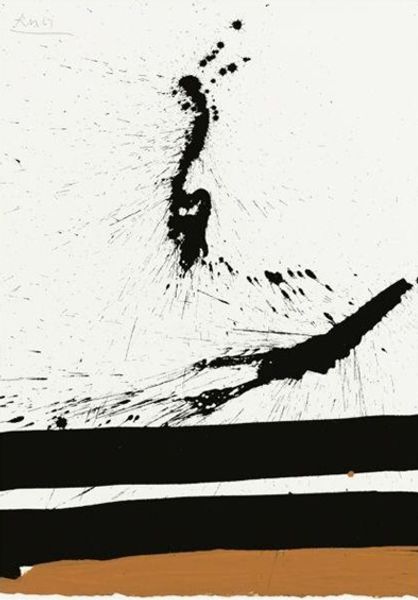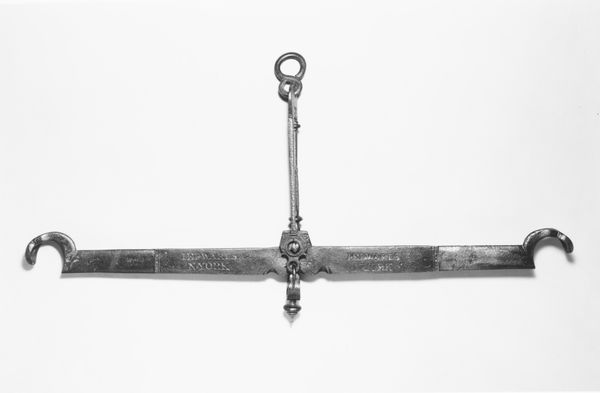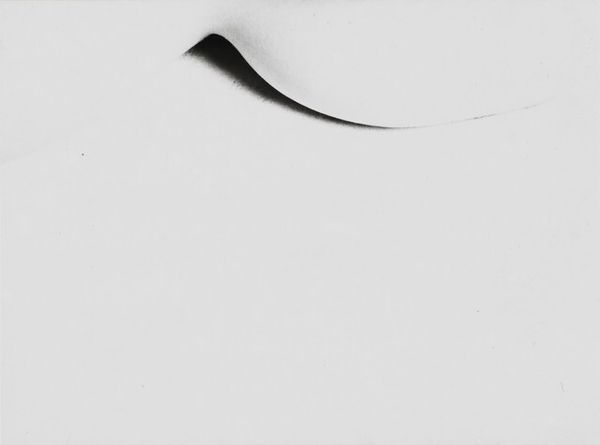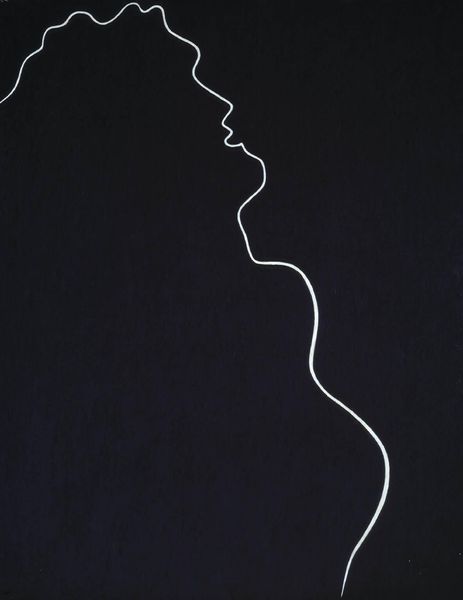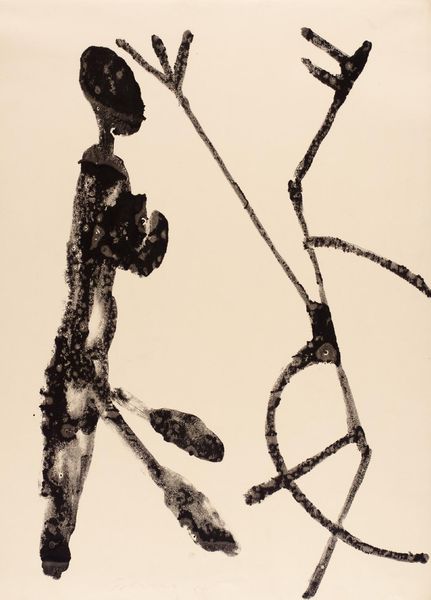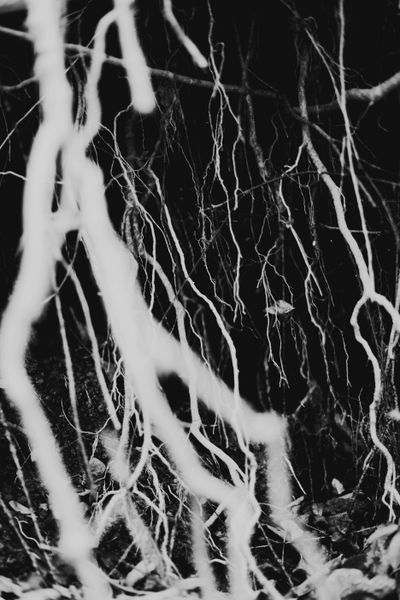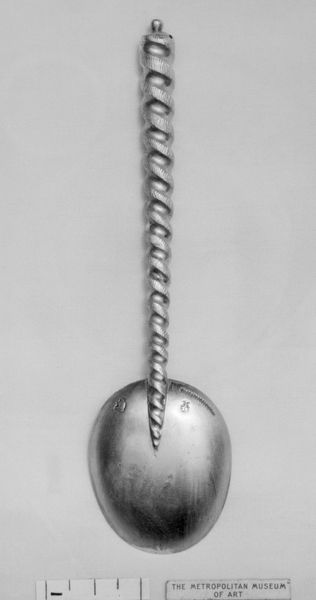
photography
#
still-life-photography
#
sculpture
#
photography
#
geometric
#
black and white
#
abstraction
Dimensions: sheet: 35.2 × 27.8 cm (13 7/8 × 10 15/16 in.) image: 32.2 × 21.5 cm (12 11/16 × 8 7/16 in.)
Copyright: National Gallery of Art: CC0 1.0
Editor: Jim Goldberg's "Woodland Hills, California, #2," made in 1990, is a stark, black and white photograph featuring what looks like a discarded telephone cord against a wooden surface. I find the starkness quite striking. What draws your eye in this image? Curator: The broken spiral, the severed connection... don't you see? It echoes the fragmentation of modern communication. The twisted cord becomes a visual metaphor for disconnection and perhaps a lament for lost intimacy in an increasingly digital world. The wooden surface grounds it, a stark reminder of organic decay contrasting with the artificiality of the plastic. How do you read the symbology? Editor: I see the "disconnection" element. Is the choice to photograph something so mundane significant? Curator: Absolutely. Goldberg elevates the overlooked, finding powerful meaning in the discarded. Think about the cultural weight of the telephone, once a symbol of connection, now becoming obsolete. Doesn’t this resonate with our anxieties about technological obsolescence and its impact on human relationships? How might future generations interpret this seemingly simple image? Editor: I hadn't considered that historical context. It adds another layer of meaning to this object. Curator: Indeed. Symbols evolve, their meanings shaped by time and cultural memory. This image serves as a potent reminder of that fluidity, of the enduring human need to find connection even amidst technological shifts. What's your take now? Editor: Now, it's like looking at a relic from the past, a ghost of a connection, more about loss than utility. Curator: Precisely. The power of visual symbols lies in their capacity to hold these layered narratives, these echoes of shared experiences across time.
Comments
No comments
Be the first to comment and join the conversation on the ultimate creative platform.
